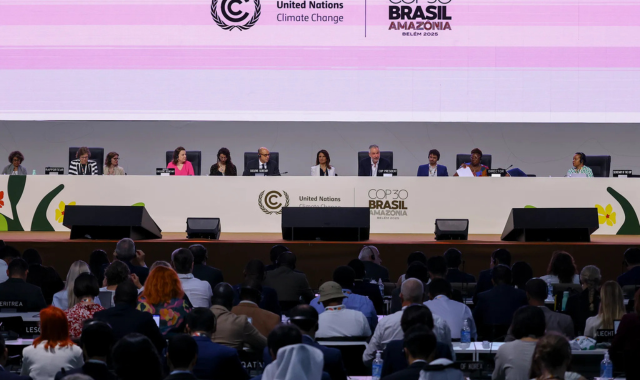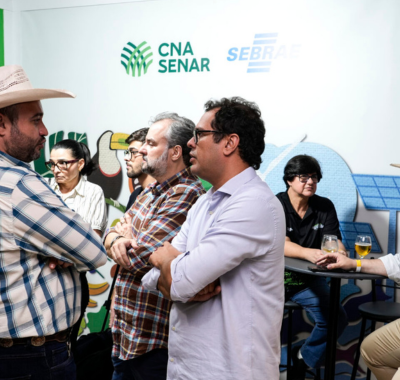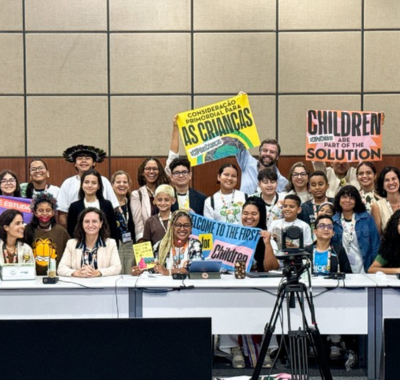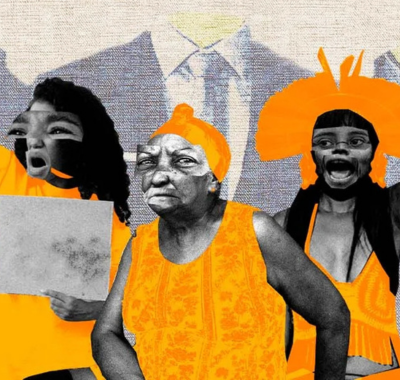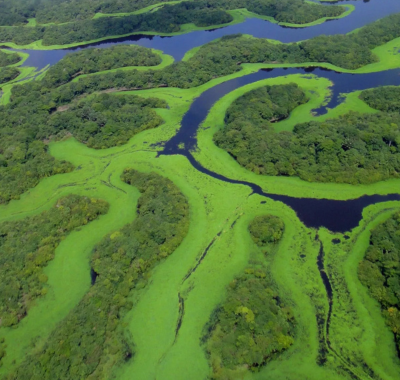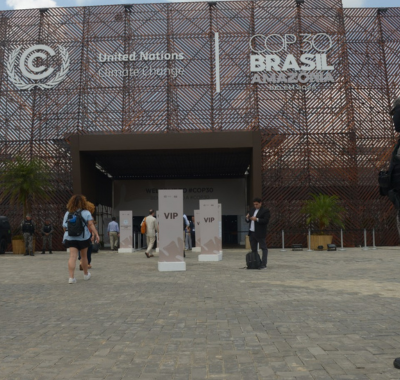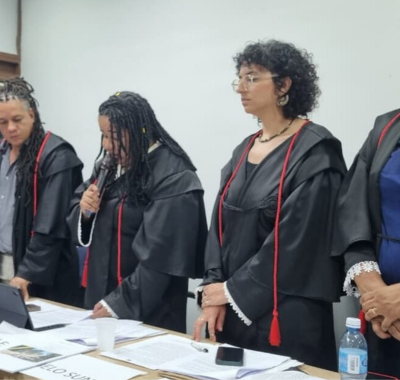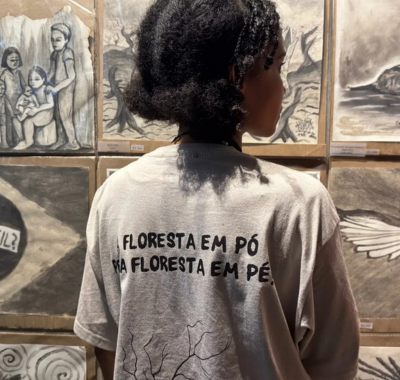After 29 climate conferences, Brazil wants the meeting in Belém to mark the beginning of a new phase in the implementation of the Paris Agreement. ‘Nexo’ spoke about the topic with three observers of the negotiations
By Mariana Vick
Translated by Diego Lopes/Verso Tradutores
COP30 enters its second week of negotiations this Monday (17) with the expectation of the arrival of around 160 State ministers in Belém. The politicians come to take charge of their delegations and conduct talks between countries, with the aim of reaching an agreement at the end of the meeting, scheduled for Friday (21).
The watchword of COP30 is implementation. The president of the conference, André Corrêa do Lago, says that, after 29 editions of climate summits, the meeting in Belém should mark the moment when the measures agreed upon in recent decades will move from paper to reality, responding to the increasingly severe effects of climate change.
“COP30 could mark the moment when humanity starts anew — restoring our alliance with the planet and between generations.” André Corrêa do Lago, president of COP30, in a letter published on November 9th, the day before the start of the conference.
But what does it mean for COP30 to be the COP of implementation? In this text, Nexo attempts to answer this question, explaining what is intended to be implemented at COP30, why the topic is being discussed so much now, and what needs to be delivered in Belém for the conference to fulfill its promise. It also outlines the challenges that must be overcome to achieve this goal.
What is to be implemented at COP30?
The Paris Agreement is at the heart of the COP30 negotiations. Signed at COP21 by 195 countries, the international treaty will be 10 years old in 2025 with the goal of limiting global warming to a level “well below” 2°C compared to pre-industrial levels, ideally striving to limit it to 1.5°C.
The Paris Agreement is a legally binding treaty—that is, it has the force of law for the countries that have ratified it. The implementation of its rules depends on economic and social changes that lead nations to reduce their greenhouse gas emissions and adapt to the effects of the climate crisis, according to the UN Climate Convention.
This implementation is not immediate. When it was signed in 2015, the Paris Agreement established a series of measures that still needed to have their rules established—that is, they needed a kind of regulation. The COPs following COP21, therefore, had to negotiate the Rulebook that would make the Paris Agreement implementable.
This process is practically concluded at COP30. With almost the entire Rulebook finalized, countries are now moving on to discussing putting the Paris Agreement into practice. It is in this context that André Corrêa do Lago and other Brazilian authorities argue that COP30 should be the COP of implementation.
”COP30 will be the COP of Truth. Either we decide to change by choice, together, or we will be forced to change by tragedy.” André Corrêa do Lago, president of COP30, in a letter published on November 9th.
“As far as Brazil is concerned, Belém will be the place where we renew our commitment to the Paris Agreement. This means not only implementing what has already been agreed upon, but also adopting additional measures capable of bridging the gap between rhetoric and reality,” said Luiz Inácio Lula da Silva, President of Brazil, in a speech at the Leaders’ Summit on November 7th.
“This COP has to be the COP of implementation. We spent 33 years [since the creation of the Climate Convention in 1992] discussing, making rules, creating a structure. Now there’s nowhere to run,” Marina Silva, Minister of the Environment and Climate Change, in a speech in February.
What does the Paris Agreement say about implementation?
The Paris Agreement is an international treaty signed by countries that are part of the UN Climate Convention. However, the convention is not responsible for its global implementation. It is up to countries, at the national (federal government) and subnational (state and municipal) levels, to create the policies that will put the text into practice.
The agreement includes instruments to monitor and facilitate this process:
➔ NDCs, or Nationally Determined Contributions
➔ GST, or Global Stocktake
➔ technical bodies, such as the SBI, or Subsidiary Implementation Body
➔ BTRs, or biannual transparency reports
NDCs are plans for reducing greenhouse gas emissions and adapting to climate change that countries voluntarily submit as part of their adherence to the Paris Agreement. Their targets must be reviewed every five years, and, although voluntary, they cannot be lowered—that is, with each review, they must be more ambitious than the previous NDCs.
The Global Stocktake (GST) is a review that countries conduct at some COPs to assess progress in implementing the Paris Agreement and its long-term goals. The first Global Stocktake took place in 2023 at COP28 in Dubai, and the next is scheduled for COP33 in 2028. The GST considers various aspects of combating climate change:
➔ mitigation (reduction of greenhouse gas emissions)
➔ adaptation (preparing for the effects of climate change)
➔ financing for climate action
➔ Capacity building for countries to take climate action.
➔ technology transfer for climate action
The SBI, in turn, is a technical body of the Climate Convention that helps countries implement the necessary measures to combat climate change, while the BTRs are reports that they must submit every two years on their progress in relation to their policies, needs and areas for improvement.
The Paris Agreement doesn’t go beyond these instruments. “There are guidelines, but the infrastructure [of the treaty] hasn’t developed mechanisms to coordinate implementation. Many countries, in fact, are resistant to these mechanisms because they feel it could interfere with their sovereignty,” Camila Jardim, an international policy expert at Greenpeace Brazil, told Nexo.
What does COP30 need to deliver in this context?
According to observers of the negotiations interviewed by Nexo, COP30 must achieve certain objectives to be considered the COP of implementation. Cintya Feitosa, senior expert leader in international strategies at the Climate and Society Institute, said, for example, that the meeting needs to deliver the roadmap for the implementation of the 2023 GST.
Two important goals agreed upon at the Dubai Global Stocktake—and for which civil society is demanding that COP30 deliver a “roadmap”—are the energy transition away from fossil fuels and the end of deforestation by 2030. Countries agreed to meet these objectives at COP28, but did not define how to do so.
COP30 also needs to define how countries’ NDCs will be implemented, considering the current gap between what is promised in national targets and what actually happens in reality, according to Jardim. “There’s a chasm between including something in the NDC and actually implementing it,” he said. There’s also a gap between what is promised in the NDCs and what science says is necessary to limit global warming to 1.5ºC.
2.3°C to 2.5°C is the degree of warming the world would register in 2100 if the NDCs presented until 2024 were strictly adhered to—which is not even happening—according to the UN Emissions Gap Report.
Another important point is to guarantee the so-called means of implementation—which include financing, capacity building, and technology transfer—for developing countries. In November, the presidencies of COP29 and COP30 published the so-called Baku-Belém Roadmap, a report that indicates measures to increase climate finance to US$1.3 trillion per year, but it is still unclear how this proposal could gain traction in the negotiations.
US$300 billion was the annual climate finance agreement adopted at COP29 in Baku. The outcome was disappointing for developing countries, which argue that the real need is US$ 1.3 trillion per year
COP30 also has the specific obligation to establish the list of indicators that will be used to measure progress on climate adaptation in countries. Negotiations on the topic began at COP28 in Dubai, and a list of 100 items is being discussed in Belém. Negotiations on the topic faced impasses in the first week.
What are the challenges to achieving the goal?
COP30 faces challenges in achieving these goals. Feitosa said that one of them is the geopolitical context. “Because of wars and the diversification of resources to other areas, countries’ fiscal space is reduced in relation to the climate agenda,” he said regarding financing.
For her, the pressure for urgency at COP30 also hinders decision-making. “The climate emergency is precisely that: an emergency. We need to make an energy transition very quickly, but at the same time, this transition needs to be fair. We need to guarantee social and environmental safeguards for the populations,” she stated.
After the first week of negotiations, countries published the first draft texts—which could form the basis for a new agreement at the end of COP30—on topics such as adaptation, just transition, and the implementation of the 2023 Global Stocktake, according to a report by Greenpeace Brazil. The outcome of the talks, however, remains uncertain.
Another challenge for COP30 is communication, according to Christiana Figueres, a Costa Rican diplomat who was executive secretary of the Climate Convention and one of the architects of the Paris Agreement. In an interview with journalists at the House of Socio-environmental Journalism—an initiative of which Nexo is a part—in Belém, she said that COP30 does not have a single major decision to make, which makes it more difficult to assess whether the meeting fulfilled its objective.
“This COP is much more difficult to communicate. Because, on the multilateral side, in the Blue Zone, there is no comprehensive legal agreement that anyone has come to negotiate. Everyone is here to analyze many important details that will help in this implementation, ” Christiana Figueres, Costa Rican diplomat and former executive secretary of the UN Climate Convention, in an interview with journalists on Tuesday (11).
Other paths to implementation
Paula Caballero, director for Latin America at The Nature Conservancy—who attended COP1 in 1995—told Nexo that efforts to implement the Paris Agreement need not be limited to negotiations between countries. According to her, one of the interesting initiatives of COP30 is the so-called action agenda, which encourages the adoption of voluntary commitments by companies, cities, and civil society.
“Over the years, we have witnessed a transformation of the COPs. There is an increasingly dynamic space outside of the negotiations. In other words, there is a growing active participation of civil society, the private sector, and the financial sector in the conferences—something that was not seen at the beginning,” she stated.
“As a society, as economies, we are increasingly understanding that climate action is not just an environmental or marginal issue, but a matter of great economic and social importance,” said Paula Caballero, director for Latin America at The Nature Conservancy, in an interview with Nexo.
Feitosa also views the action agenda favorably. “Implementation doesn’t depend solely on governments. This space [of the action agenda] doesn’t necessarily lead to implementation, but it enables conversations. It’s a unique opportunity to bring together decision-makers with those who are implementing that decision on the ground,” she said.
Jardim, on the other hand, disagrees. “An action agenda is not the same thing as a negotiated text. If there is no negotiated text, we have no security whatsoever. On the other hand, when we have a negotiated text, it becomes international law—something concrete that we can monitor,” she stated.
—
This report was produced by Nexo, through the Collaborative Socio-environmental Coverage of COP 30. Read the original report at: https://www.nexojornal.com.br/expresso/2025/11/16/cop30-cop-da-implementacao-como-colocar-acordo-em-pratica

